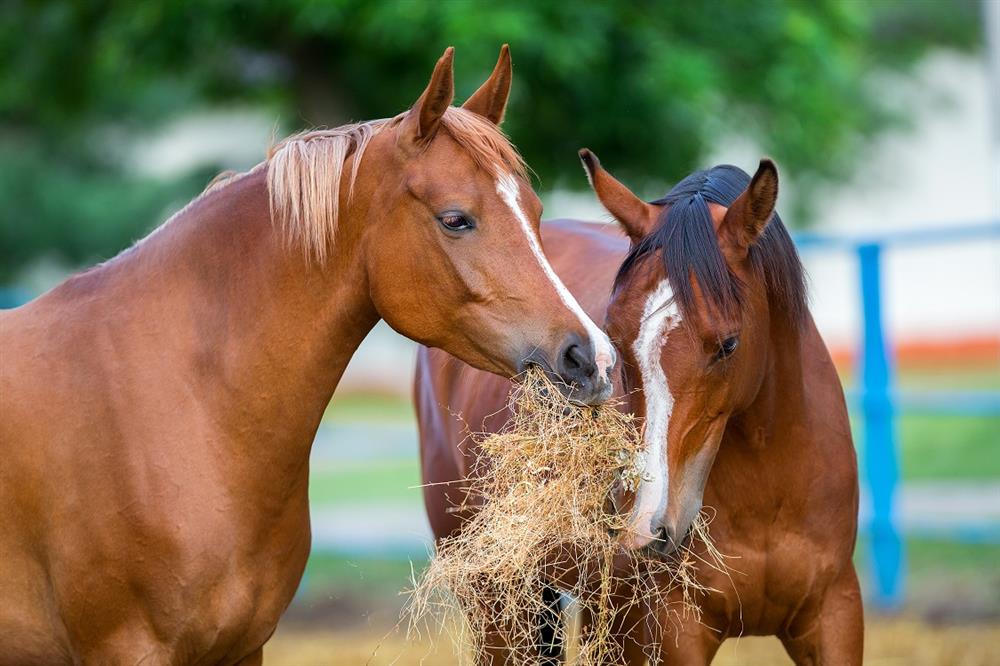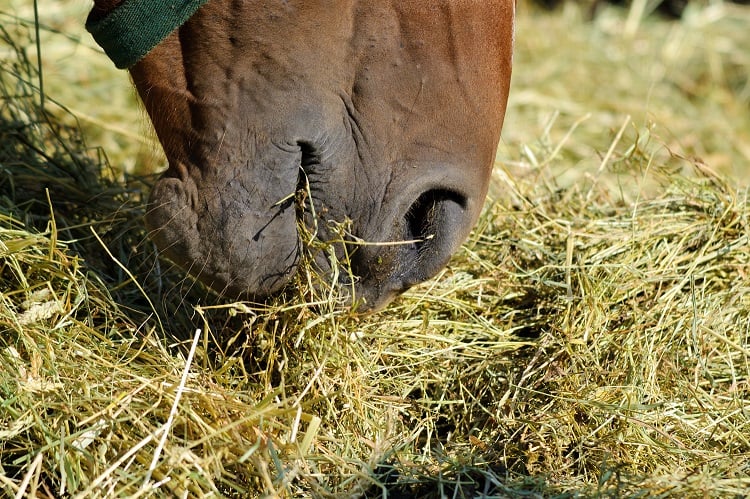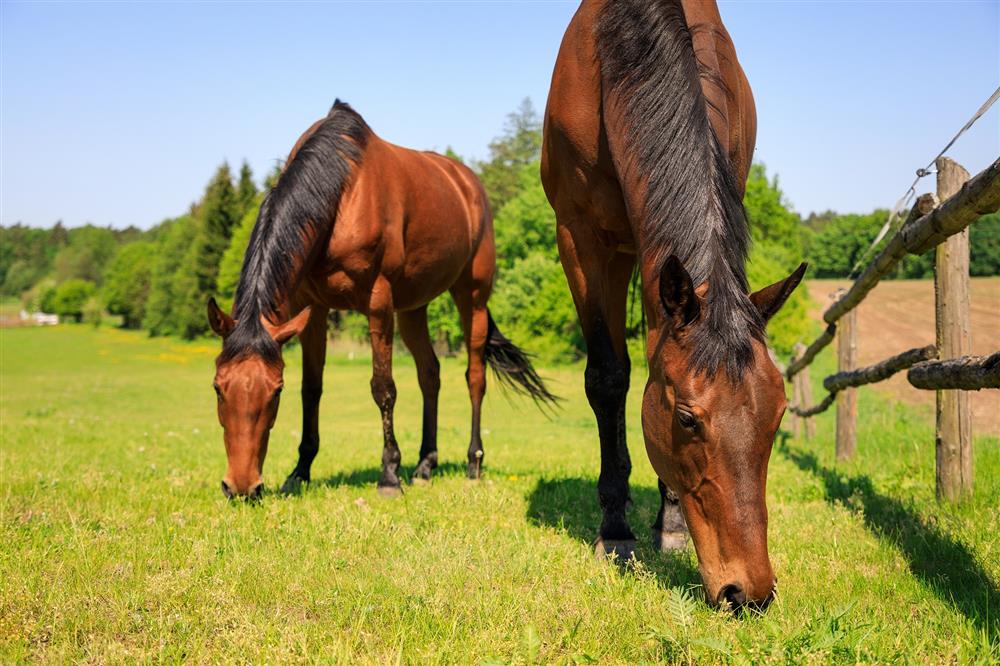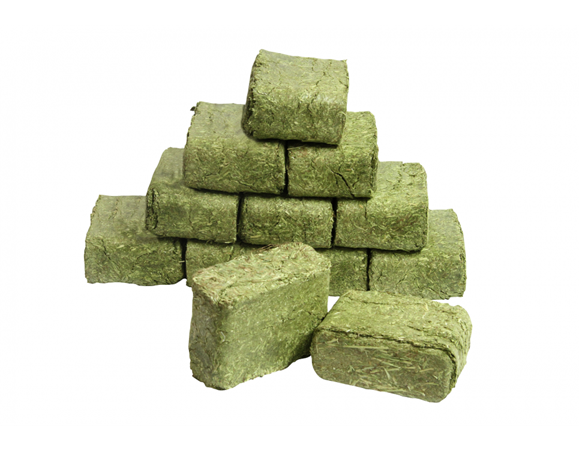Forage
It should make up the largest part of our horse’s daily diet, but do you know which forage is best for your horse and how much he should be consuming every day?

Hay vs. Haylage?
This seems to be an on-going hot topic amongst horse owners. There are positives and negatives to each, so it is entirely up to the needs of your horse, as to which type of forage would be more favourable. Whether you choose to feed hay or haylage to your horse, it is vital that the forage is of good quality and you are feeding the right amount for your horse. As a general guide, a horse should consume 2-2.5% of his bodyweight in food per day and should never have less than 1% of his bodyweight in forage (e.g. 5kg for a 500kg horse).
Hay
When grass is cut for hay, it is left to dry out completely before being baled. It has a low energy value so while it will provide sufficient fibre, it is less likely to cause weight gain at the rate that haylage can. It can be dusty and needs to be stored inside. It can be soaked for up to 12 hours to reduce the dust spores and the non-structural carbohydrates (NSC), whereas haylage should not be soaked. Hay is the best choice for good doers, those on a restricted diet or in light work with low energy requirements.

Haylage
Haylage has a higher moisture content than hay as it is cut earlier and at a younger stage of growth than when hay is cut. Therefore, haylage has a lower dry matter content (DM) and higher moisture content. Due to this, a higher volume of haylage needs to be fed to ensure the horse is receiving enough fibre (generally 1 ¼ times more than hay). Haylage is dust free so it is the ideal forage for a horse with respiratory issues.
Haylage can be stored outside as it is wrapped tightly in polythene to prevent mould, however care needs to be taken to ensure no damage is caused to the wrapping as this can spoil an entire bale.
Haylage may be the better option for horses in medium-hard work, young and old horses that have higher protein requirements, and those with dust allergies. It isn’t advised for a horse or pony on a restricted diet due to the higher energy value. Here is an interesting article on feeding haylage to ponies with insulin dysregulation.
Grass
Grass is just grass, right? Wrong. There are lots of different species of grass that all have different nutrient values. Ideally, horses should graze on paddocks with a variety of meadow grasses. It is advised that horse’s avoid pastures heavily populated with rye grass as this is a lot higher in sugar than other species, and traditionally fed to cattle to encourage weight gain.

Hay replacers
Some horses and ponies may require hay replacers, most often due to dental issues reducing their ability to chew long stem fibre. If this is the case, consider feeding a grass or fibre block. These are compact 1kg blocks of forage that can be soaked in 5 litres of water to aid hydration and provide the essential fibre that the horse’s body requires.
Additionally, there are high fibre feeds that can be fed as hay replacers and a re often soaked to provide an ‘easy to eat’ feed for the horse or pony with compromised dental health.

Vitamins and Minerals
It is important to know that forage typically doesn’t provide the sufficient level of essential vitamins and minerals that the horse’s body requires for vital body functions. Therefore, it is recommended that a vitamin and mineral supplement is fed, unless the horse is on a ‘complete feed’ which already comprises of the right nutrients when feed at the recommended level. A broad-spectrum supplement such as Benevit delivers 25 vitamins and minerals, all necessary for your horse’s health and well-being.
More information on vitamins and minerals and why they are so important can be found here.
For any nutritional queries, please don’t hesitate to give us a call on our free advice line: 0800 585 525. Our Nutritional Advisers are available seven days a week, from 8.30am to 5.30pm on weekdays and from 10am until 4pm on Saturdays and Sundays.

